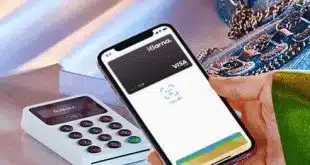One thing that can help put over a new payment technology is backing from a bank or technology company that controls a huge chunk of the consumer universe. But the key word here is “help.” Consumers and merchants have to be ready for the technology, as well.
With contactless cards, that readiness may finally be there. Thirteen years ago, when JPMorgan Chase & Co. launched its blink card with hearty fanfare and big ambitions, it wasn’t. After lingering in the market like the ghost of a long-forgotten icon, the card finally met its demise in 2014 when Chase mercifully euthanized it.
Circumstances are much better now for a contactless product. The EMV rollout, as messy as it was, finally put terminals capable of near-field communication on the countertops of millions of merchants. The advent of mobile wallets has trained at least some consumers (though not as many as Apple and Google would like) to appreciate the convenience of tap-and-go. And the need for fast throughput in some sectors has only grown more urgent with EMV’s leisurely transaction times.
Sensing the opportunity, Chase is back in the contactless card business (see Gimlet Eye). The market’s contours are different now, of course. The cards are so-called dual-interface plastic, meaning they can be inserted into chip-reading terminals or waved at or tapped on them. They are fitted with NFC technology now for fast and secure interactions. And Americans who venture abroad have had a chance to see for themselves how fast contactless has developed in places like the United Kingdom.
Chase’s heft in the credit card business—it is the nation’s biggest issuer—doesn’t guarantee success. It didn’t a decade ago. But a swarm of contactless credit and debit cards unleashed across the country can’t hurt, and in combination with dual-interface plastic from other issuers might induce more merchants to enable NFC in those EMV terminals they’ve deployed.
That should help cure the merchant indifference blink encountered. Consumers weren’t so sure they wanted or needed the technology either, a problem that in turn might be overcome by growing familiarity with mobile wallets.
Indeed, it’s hard to say how much longer physical, plastic cards are going to be with us. A recent report from the global processor Worldpay says wallet usage is growing fast. Its report it focused on online usage of cards and wallets, but it says the population of in-store wallet users in the United States is growing at a 33% annual rate. Of course, while credit and debit cards may dwindle over time, they will be with us for a while yet. It’s good to know they will be so much easier to use.
— John Stewart, Editor, john@digitaltransactions.net





